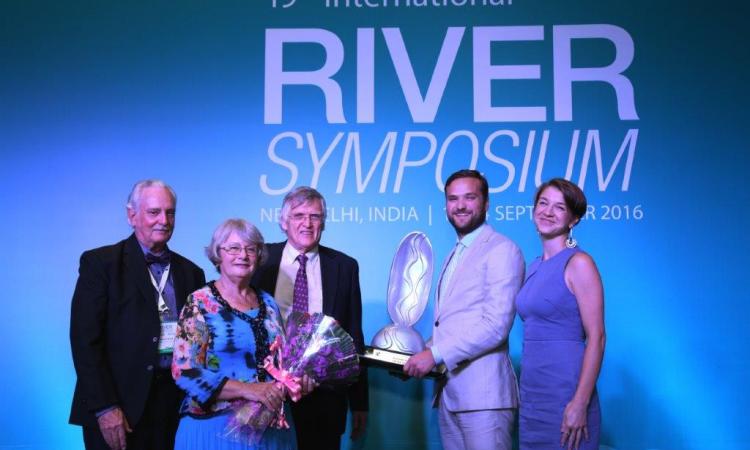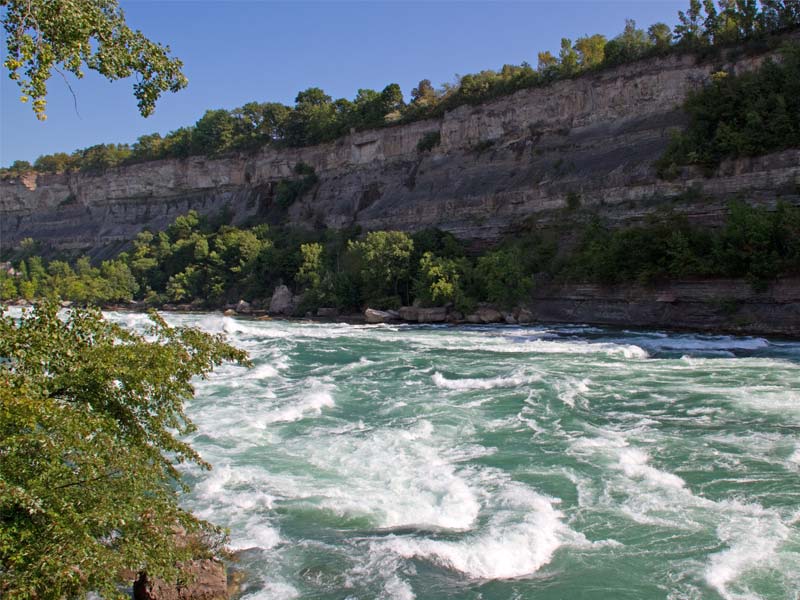
The Thiess International Riverprize is a globally renowned prize that is awarded by the International RiverFoundation to those demonstrating outstanding results in the sustainable river basin management, restoration and protection across the world. This year, apart from the global recognition as a leader in sustainable river initiatives, the winner also received a cash prize of AU$200,000.
The finalists for this year were the US Department of the Interior and the Lower Elwha Klallam Tribe for bringing back the salmon population by removing the dams on the Elwha river; Segura River Basin Authority and Murcia Government Regional Water Department for restoring the health of the Segura river in Spain; and the winner of the award, Buffalo Niagara Riverkeeper for restoring the river and thus leading the economic revitalisation of the region.
The Buffalo Niagara Riverkeeper was founded in 1989 by a volunteer group of environmental professionals and concerned citizens out of a desire to restore and protect the Buffalo river. Today, this innovative non-profit business model is one of the largest ‘waterkeeper’ organisations of the world. The Buffalo Niagara Riverkeeper now supports 22 full-time staff who work on 3,250 miles of waterways throughout the 1,400-square mile Niagara river watershed, including two of the Great Lakes of the US--Lake Erie and Lake Ontario.
We spoke to Susan E. Kornacki, communications and development manager of Buffalo Niagara Riverkeeper, for a better understanding of what led to the success of the project.

What was the main driving force behind the Buffalo Niagara river restoration?
Buffalo river is the tributary of the Niagara river. The river caught fire in the year 1969 as it was severely polluted due to industrial waste discharge in the river. During that time, steel production contributed to a major part of Buffalo’s economy. So, the federal environmental protection agency designated the Buffalo river as an area of concern as it was not meeting certain requirements. Fish in the river was so unhealthy that some of them had tumours or were diseased in some way. Swimming and other recreational activities were not allowed in the river. After getting declared as an area of concern, which is one of the 43 toxic hotspots of the States at that time, there was a call to get the funds from the federal government for the river clean-up. Finally, the process of Buffalo river restoration was initiated.
Which component led to the success of Buffalo river restoration?
Community participation has been critical to our success. From the start, we had and we built the support in our community. We have maintained and tried to keep up the momentum by engaging our community in river tours, kayaking, workshops, and public forums. We have worked hard to keep the clean-up process as transparent as possible, letting people know what we are doing. We kept communicating to the people about the impacts of our efforts until they found reasons to get more involved. This strengthened the level of support from the community and ultimately helped in showing to the officials and political leaders that the issue of river health is important to the locals.
Also, our partnerships with the country, state and federal governments have also played an integral role in the success of the project. We are grateful to our funders from different corporations and banks who have contributed money for the clean-up process of the Buffalo river. We have also partnered with few community organisations and non-profits in the area who have helped in keeping this issue in the public eye. Working all alone would not have led to the success of the Buffalo river restoration.
How much time did it take to complete the Buffalo river restoration project?
Buffalo Niagara RiverKeeper started 26 years ago. The Buffalo river is expected to be delisted by 2020. So, in the next few years, we should be completing the project. However, the clean-up process of the Niagara is going on.
How did the restoration efforts benefit the community? Did they receive any economic benefits after the rejuvenation?
The restoration process could leverage over $100 million as investment for the community. This included grants from the federal level, way down to local support and individual donations. The money is being utilised for paying the people who took part in the dredging and restoration efforts; this had a significant economic impact on the community. Along with this, the revitalisation around the waterfront took off. In a few years, the region witnessed an incredible change in the area, so everyone who visited the waterfront or the lake was either kayaking, boating or eating ice creams. New restaurants are opening in the area and the recreational activities are creating jobs for people.
Therefore, we believe that improved water quality leads to greater demand for recreational activities from boating to kayaking and fishing and that leads to economic growth. Transforming the water quality of a river brings the environment back to better health which further contributes to economic growth.
What were the challenges you faced during the period of river restoration?
Initially people laughed at the idea of cleaning the river as they thought it was impossible. There was no hope for the Buffalo river especially when the steel industry was booming. However, the scenario changed post the economic downturn when the steel was no longer in demand.
Also, throughout these years we have faced the challenge of raising grants as we are a non-profit organisation. We ask the community for financial support, however, we also have some general groups in our community who have helped us this far. Moreover, the support we have received from the International RiverFoundation is critical to our continuing rejuvenation. Also, it’s actually the opportunities like these that keep us going.
What is the way forward in maintaining the restored state of the river?
There are two components to this. First, as we have made progress on the Buffalo river clean-up, we are now looking at the health of the entire Niagara river watershed. Although we have addressed the main sources of pollution, there are other matters that we are focusing our attention on, especially the headwaters and the upper watershed which are under the threat of erosion, water pollution and infrastructure development. Therefore, we are doing a lot of work to study the issues affecting the upper watershed and doing community outreach and building support in that area so that we can continue to have an impact on the watershed. Along with this, we are also working to protect the water quality in the lake area and continue to monitor it closely to understand how the water quality of the lake gets affected.
Specific issues may vary from river to river but the approach of educating people broadly and deeply is relevant
Your suggestions on the rejuvenation of Indian rivers?
I think something that we do and is relevant here as well is that earlier in the process we invited feedback from community members who had vested interest in the survival of the river. This includes fishermen, concerned citizen groups, educational groups, environmentalists and local activists. So, we worked on to get to know these people and asked them what they wanted from the river and then included them in the process as we moved forward. I think working like that will be very helpful. Also, I feel India is already a country where nature is valued, so building on that momentum will be quite helpful.
We have done many educational and volunteering programmes to involve people interested in the work. We have a volunteer day when people come out and clear the litter in our community. This builds up their interest and excitement as they get the chance to give back to their community and make an impact. Along with this, our classes and workshops have also been popular. We run a programme called River Academy for college and doctorate students to learn about the issues affecting the waterway. Many people have got back to us saying the programme has been transformational for them, helping them understand the problem of the waterways and empowering them with real solutions which they can take back and use it in their community. So, the specific issues may vary from river to river but the approach of educating people broadly and deeply is relevant.